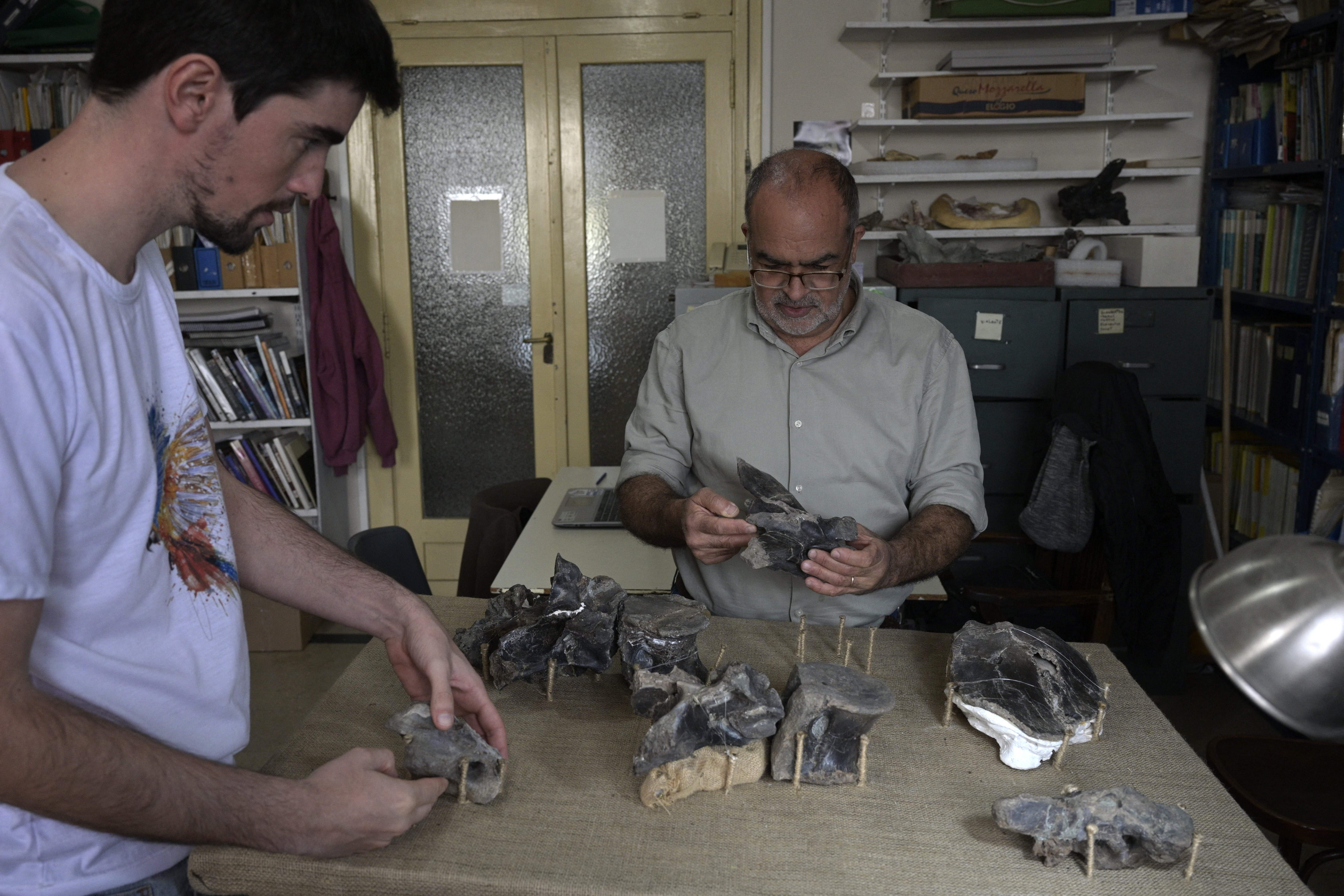The Independent's journalism is supported by our readers. When you purchase through links on our site, we may earn commission.
Giant 32-feet-long ‘death shadow’ dinosaur discovered by scientists in Argentina
Dinosaur may have been member of group that later gave rise to birds, say scientists
A 32ft (9.5m) “death shadow” dinosaur that may have been the apex predator of its time about 70 million years ago has been discovered by scientists in Argentina.
The dinosaur is the largest “megaraptor” found to date and was discovered based on fragmentary bones excavated from Santa Cruz province, Patagonia (Argentina), said researchers in the journal Scientific Reports published on 26 April.
The new dinosaur, Maip macrothorax , is named after the legend of “Maip”, an evil spirit said to roam the Andes. Its name means “the shadow of death” which “kills with cold wind,” scientists said.
The dinosaur had two sharp curved claws in each front paw with the talons some 40cm (15.7in) long, AFP reported.
The megaraptor’s specific name macrothorax, scientists said, is from the Latin for big thorax and is based on fossil evidence that indicated this dinosaur was deep-chested with a large thoracic cavity more than 1.2m (3.9ft) in width.
Researchers, including Alexis M Aranciaga Rolando from the Bernardino Rivadavia Museum of Natural Science, assessed fossil remains of the dinosaur, representing only a small portion of its overall skeleton, such as a few sections of backbone, ribs, a partial toe bone and fragments of the shoulder blade.
By studying these bones, paleontologists said the megaraptor may have been a member of the Coelurosauria dinosaur clade (group) that later gave rise to birds.
They said the dinosaur likely lived about 70 million years ago towards the end of the Cretaceous period in a tropical forest before the formation of the Andes mountain range and its glaciers which now mark Patagonia.

The humongous size of these raptors may have been due to the extinction of the dinosaur group Carcharodontosaurids, many of which were apex predators on the southern continents.
Researchers said the megaraptorids – a group that includes giant sized raptor dinosaurs – likely evolved, eventually becoming larger, heavier and more robust, filling this vacant niche of top-predator in many parts of the Southern Hemisphere during the Late Cretaceous.
This was likely following a global extinction event about 94 million years ago that led to the demise of Carcharodontosauridae dinosaurs.
With the absence of apex predators, scientists said the megaraptorids evolved to fill this niche in the Southern Hemisphere, while the tyrannosaurids family, which includes the T.rex, became bigger and occupied this role in Asia and North America.
Before the extinction of Carcharodontosaurids, the body size in the Megaraptoridae was limited to around six metres in length, but likely increased to an excess of 10m at the very end of the Cretaceous.
While the uncovered bones represent only a small part of the dinosaur’s total skeleton, and no cranial material has been identified, scientists said Maip macrothorax is still the most informative megaraptor known from this stage of dinosaur evolution.
They said Maip was one of the last megaraptors to live on Earth before the extinction of dinosaurs and also the southernmost megaraptor ever found.
Join our commenting forum
Join thought-provoking conversations, follow other Independent readers and see their replies
Comments
Bookmark popover
Removed from bookmarks